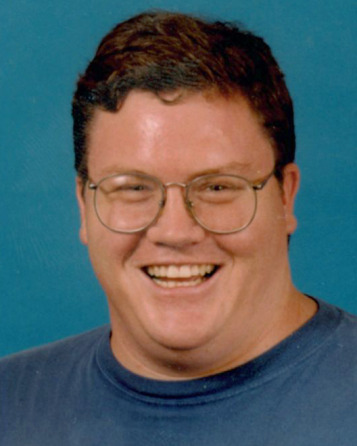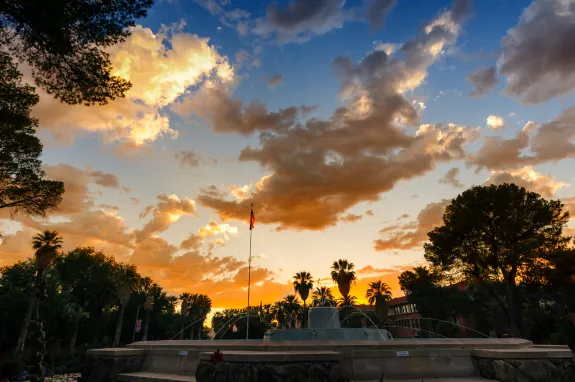
In Memoriam
Memoriam
Horton Newsom
×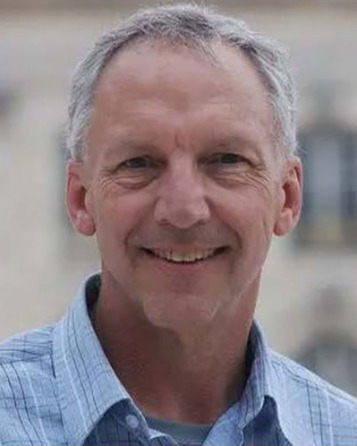
LPL alumnus Dr. Horton Newsom passed away on April 19, 2024.
Horton earned his Ph.D. in Geosciences at UArizona in 1982 with a dissertation titled The Experimental Partitioning Behavior of Tungsten and Phosphorus: Implications for the Composition and Formation of the Earth, Moon and Eucrite Parent Body. His dissertation committee was chaired by LPL Professor Michael J. Drake and included then LPL head and director Laurel Wilkening as a member.
Dr. Newsom worked as a senior research scientist and research professor within the Institute of Meteoritics and Department of Earth and Planetary Sciences at the University of New Mexico. He was a geologist and geochemist with expertise in the origin and composition of the Earth and Moon, and the study of terrestrial impact craters around the world and their hydrothermal systems. He studied surface processes on Mars including impact craters, sedimentary deposits, and phyllosilicate (clay) bearing terrains. His research also included the origin and chemistry of Martian surficial materials using data from the Mars Odyssey Gamma Ray spectrometer experiment.
Horton was engaged with landing site selection for several Mars missions, including the Mars Exploration Rover (MER), Mars Science Laboratory (MSL), and future human landing sites. He was a co-investigator and science team member on the ChemCam Laser Induced Breakdown Spectroscopy (LIBS) instrument on the MSL Curiosity Rover, and was engaged with planning its science observations. Dr. Newsom was also a dedicated educator who mentored undergraduate and graduate students as well as postdoctoral scholars. He was active in NASA-funded educational outreach to K-12 teachers, and to local middle school and high school students, and Native American colleges.
PermalinkTobias Owen
×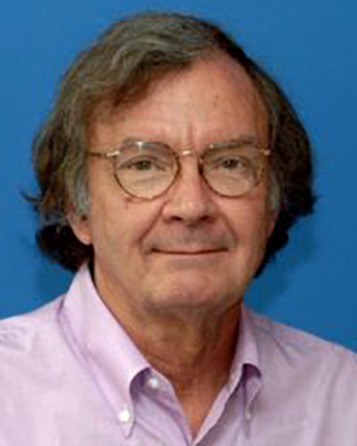
Tobias (Toby) C. Owen died on March 4, 2017, in Sacramento, California, where he had been living since his retirement from the University of Hawaii’s Institute for Astronomy in 2012. Owen’s career as a planetary scientist started at the beginning of the exploration of the solar system with spacecraft, and he was actively involved in the Juno mission at the end.
Owen grew up in Denver, Colorado, and Santa Fe, New Mexico. He developed an interest in astronomy at an early age and went on to the University of Chicago to earn his B.S. and M.S. degrees in physics. He then enrolled in the newly formed Lunar and Planetary Laboratory (LPL) at the University of Arizona, becoming one of the first students of Gerard Kuiper, and obtaining his Ph.D. in 1965 on spectroscopic studies of Mars, Jupiter, and Saturn. Owen joined the faculty at the State University of New York (SUNY) at Stony Brook, where he was a professor for many years, and then joined the faculty at the University of Hawaii, where he was affiliated until his passing.
Owen’s earliest work was in spectroscopy of the giant planets, and this interest quickly broadened to encompass all aspects of the origin and evolution of planetary atmospheres. With a special interest in isotopic abundances, he pursued and promoted a wide range of observational and theoretical investigations toward understanding the origins of all the planets and small bodies of the solar system. As one of the world’s leading planetary scientists, he was an active participant in a great number of missions, including Apollo 15 and 16, Viking, Voyager, Galileo, Rosetta, Juno, and Cassini-Huygens. He played a leading role in the development of the Cassini-Huygens mission as a joint project of NASA and ESA, and was called upon frequently to promote this and other missions to funding agencies in Europe as well as to NASA. Owen had close ties with European colleagues, notably in France, where he inspired a vigorous planetary group at the Paris Observatory.
Along with his scientific endeavors, Owen collaborated with with Frank Drake and Carl Sagan to initiate an effort in 1968 to form a specialized society in planetary studies. Acting on a suggestion from Juan Oro, and with the support of several planetary specialists at Kitt Peak National Observatory, their efforts ultimately led to the formation of the AAS Division of Planetary Sciences (DPS).
With the passing of Owen, science has lost a great talent, a valued colleague, and to many in the U.S. and abroad, a close friend. He will be remembered as a man of the world, unfailingly generous and modest, and a great scientist. He inspired all of his many colleagues with his enthusiasm for all aspects of planetary science, including the big questions of the origin of the solar system and of life in the universe. Among the many honors and accolades he received, Owen was awarded the Gerard P. Kuiper Prize of the DPS in 2009.
— Portions of text courtesy of the Institute for Astronomy, University of Hawaii, and the Division of Planetary Sciences
PermalinkElisabetta Pierazzo
×
Elisabetta Pierazzo, Senior Scientist at the Planetary Science Institute, was part of the science staff at Planetary Science Institute for nine years until her untimely death from cancer in 2011.
Betty was an expert in the area of impact modeling throughout the solar system as well as an expert on the astrobiological and environmental effects of impacts on Earth and Mars. Her work ranged from providing detailed insights into the Chicxulub impact that caused the extinction of the dinosaurs to putting constraints on the thickness of the ice shell of Jupiter's moon Europa. She was interested in the rise of life and explored the delivery of organics by comets. She also studied the creation of subsurface hydrothermal systems by impacts that may have been favorable sites for life on Mars.
She made several appearances on national and international media (including National Geographic specials) to speak about the Meteor Crater in Arizona and explain its formation. Betty was innovative, rigorous, and systematic in her approach to science. She recognized the need for benchmarking and validating the different complex numerical codes to model impact and explosion cratering. She organized and led a science community effort to accomplish this major task.
In addition to her science research, Betty passionately promoted science education and public outreach. She taught undergraduates at the University of Arizona, she developed interactive websites and impact rock and meteorite kits for classroom use, as well as created professional development workshops for elementary and middle school science teachers.
Betty was an active member of the planetary science community. She served on numerous NASA review panels, was an associate editor of Meteoritics and Planetary Sciences, reviewed papers for several scientific journals, organized international workshops and meetings on impact cratering, and was an organizer of the 2007 Meteoritical Society Meeting held in Tucson, Arizona.
Betty was noted for the intensity with which she approached both life and work. Whether it was in the office, the classroom, on the volleyball court, the soccer field, or dance floor, her enthusiasm and joy were irresistible. She handled the challenges of living in a foreign country by opening her house and her kitchen to others. She was cherished by many people for her staunch friendship and support and she inspired countless people as a colleague, teacher, mentor, and friend. Her life was even more brightened with her marriage to Keith Powell in 2007.
In her last six months, Betty battled a rare form of cancer. She dealt with it aggressively and never let it overwhelm her. She was always looking towards the future. In the last week of her life, in the midst of chemotherapy, she was grading class papers, working on research papers, writing reviews and preparing education proposals with her colleagues, all the while finding time to spend precious moments with her family and friends. She was ultimately and suddenly struck down by a pulmonary embolism. Her loss is great to all those who knew her. The Planetary Science Institute and her science colleagues deeply felt the loss of this accomplished scientist. We are grateful to her husband, Keith, and to her family for the time she did have with us.
PermalinkElizabeth Roemer
×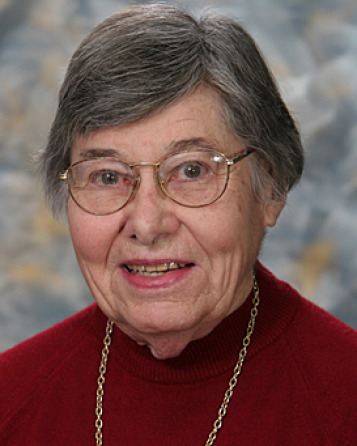
Professor Emerita Elizabeth (Pat) Roemer, passed away on April 8, 2016. Pat joined LPL in 1966, and retired in 1997. In 1972, Dr. Roemer chaired the committee tasked with organizing a department of planetary sciences for the University of Arizona. She specialized in comets and asteroids, starting at a time long before those were popular topics, and was a female professor in a male-dominated community long before that was commonplace. She was also a staunch friend and supporter of the LPL library for many years.
Elizabeth Roemer: Comet Notes
Astronomical History: September 2023 - Dr. Elizabeth Roemer (AAS)
Alfred Schultz
×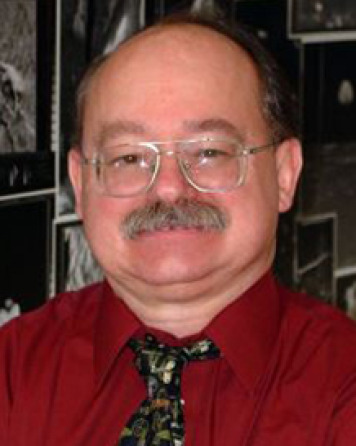
Alfred Schultz was a space scientist with a strong instrumental background and boundless curiosity. He passed away on Sunday, October 23, 2022, in Alexandria, Virginia, at the age of 73.
Alfred Bernard Schultz (Al) was born on December 28,1948 to Edna and Nicholas Schultz, in New London, Connecticut. He grew up in a large family with seven siblings, including an identical twin brother, Albert. Al was close to his family and especially devoted to his many nieces and nephews and their children.
Al relocated with his family to California in 1955 where his father was a machinist for Aerojet General and one of his noteworthy assignments was in the crafting of the engines used in the Apollo Program. The Schultz family settled in a cabin located in Sutter Creek where he grew up and graduated from Amador High School in 1966. Al was a veteran of the Vietnam war and a member of the American Legion. He served two tours as a photographer for the Air Force and survived the Saigon Tet Offensive in 1967. His passion for photography led him to pursue a career in optics. He attended the University of California Davis as an undergraduate on the GI Bill, which he supplemented by working a side job cutting and selling firewood. After graduating with a B.Sc. in Physics in 1977, Al attended the University of Nevada Reno (UNR) to pursue a career in Physics.
In 1982, Al earned his Ph.D. in Physics for his study of the “resolving power of the UNR 16-inch telescope,” under Vern Frazier. Al accepted a position as an adjunct professor in the UNR physics department and served on two Ph.D. committees. In 1984, he moved on with his scientific career to the University of Nevada Las Vegas (UNLV) where he also taught general physics as well as an upper division Optics course. Al teamed with faculty at UNLV to study interacting galaxies. Al made it a point to involve students in research, first at UNR then UNLV and then eventually at Weber State University (WSU). Al’s consistent efforts in collaborating with others persisted throughout his career.
From WSU, Al joined the comet research group at the University of Arizona’s Lunar and Planetary Laboratory (LPL) as a post-doctoral associate. In anticipation of observing Comet Halley during its passage in 1985/1986, Al directed his work ethic to successfully assemble a CCD camera, which produced many high-quality, broadband, visible images.
In 1990, he accepted a position at the Space Telescope Science Institute (STScI). He also joined a comet group based at NASA’s Goddard Space Flight Center which was part of NASA’s International Halley Watch (IHW). The archive was published both as a printed catalogue and a digital archive. Al was very interested in using the ground-based comet data with data archived at STScI. As part of those efforts, Al collaborated in a NASA workshop set up to educate the community on the use of CD-ROM media to distribute the comet data directly to scientists.
Al formed collaboration groups with many others on observing and data analysis of interacting galaxies. His efforts and acumen were recognized by the community, and he was awarded observing time as principal investigator of three different proposals to use the International Ultraviolet Explorer (IUE) space telescope to observe these groups of galaxies. One of his students, Melodi Rodrigue, successfully pursued a Ph.D. dissertation using IUE observations of the Hickson Compact Groups of galaxies.
While at STScI, Al worked his way up through the ranks by contributing to Hubble Space Telescope (HST) operations, managing calibration proposals, proposing science observations, and publishing the results. Al began work in the Post-Observation Data Processing System (PODPS), ensuring that HST observations and the calibration data were archived and compatible with observer requirements. During his 15-year career at STScI, Al rose to become a contact scientist for the Goddard High Resolution Spectrograph (GHRS), Wide Field and Planetary Camera 2 (WFPC2), and Near Infrared Camera and Multi Object Spectrograph (NICMOS). Al was the recognized go-to STScI scientist to consult on the use of the NICMOS coronagraphic capabilities.
Al was a co- or principal-investigator on 41 Hubble observing programs, and the principal investigator on 28 of them. Seven of his HST principal investigator proposals were awarded observing time by the HST Time Allocation Committees (TACs). Most astronomers consider themselves fortunate if they ever receive one such award. Those successful TAC programs competed against other community proposals where the oversubscription ratio for HST ranged from 4:1 to 8:1. The TAC-awarded proposals included searches for and imaging of faint extrasolar companions, monitoring transits of extra-solar planets, imaging of the debris disk around the nearby star beta Pictoris, and a study of the Sun’s nearest neighbor, Proxima Centauri. Al was a co-discoverer of three faint brown dwarfs.
Al was the conference chair for the 2002 SPIE Astronomical Telescopes and Instrumentation High-Contrast Imaging for Exoplanet Detection panel and editor of the conference proceedings. Al had over 90 publications in conference proceedings, astronomy and astrophysics journals including the International Optical Society (SPIE), Astrophysical Journal (ApJ), and the Publications of the Astronomical Society of the Pacific (PASP).
From 1998-2005 Al Schultz led a group of scientists and operations personnel from STScI, Goddard, and Catholic University of America to re-examine an old idea discussed as early as 1962 by Lyman Spitzer of using an external occulting screen widely separated from a space telescope for the purpose of looking for and the study of planets around other stars.
During Al’s career at STScI, he collaborated with staff and guest observers and his enthusiasm for astronomical research was well known. When his employment at STScI ended in 2005, Al secured an open position at Goddard Space Flight Center (GSFC) in the Solar System Exploration Division that oversees the Planetary Data System (PDS) project, the successor to the IHW. He spent five years at GSFC working on internal GSFC proposals, technology upgrades to the National Space Science Data Center (NSSDC) archive, and data reviews for the Lunar Data Node of the PDS. As part of his activities at GSFC, Al collaborated on the definition of the EPOXI mission (repurposed Deep Impact spacecraft) and collaborated with groups examining external occulter exoplanet mission designs.
Along with his scientific work, Al found time to produce a book based on the historical records of his father, entitled “I Enjoyed Every Minute: A journey Through the Great Events of the 20th Century”. Al had to retrain himself to accomplish this type of historical research. He also penned a memoir about Vietnam – “My Days in the Air Force” and wrote a novel – “A Pilgrimage to the Land of King Arthur”.
Al retired early due to health reasons, purchased a house near Preston, Connecticut and enjoyed life as a gentleman farmer near the local branch of the Schultz extended family. He frequently visited family and friends and shared extensive travel logs. Al had a boundless passion for his family and astronomy. He was always enthusiastic and actively engaged in spreading new discoveries in science and astronomy. He was a dedicated scientist who was always upbeat and inclusive with students and a good friend to those who knew him well.
Alfred Bernard Schultz (1948-2022)
PermalinkChuck See
×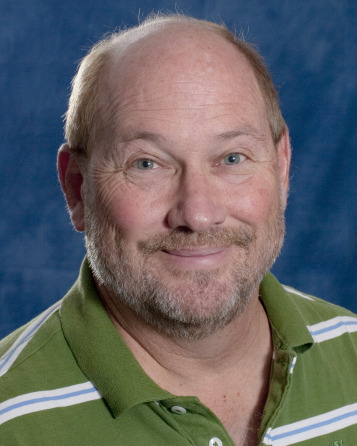
Charles "Chuck" See, a long-time member of the LPL family, passed away on January 8. Chuck was a native Tucsonan who earned a B.S. in Mechanical and Aerospace Engineering as well as an M.S. in Electrical Engineering from the University of Arizona. He spent ten years working as an aerospace engineer at firms like Sperry Space Systems (Phoenix), Allied Signal (Tucson), Westinghouse (Pittsburgh), Honeywell (Phoenix) & Westinghouse (Baltimore). In 1995, Chuck returned to the UA as a staff engineer working with Professor Martin Tomasko on the Cassini Descent Imager/Spectral Radiometer (DISR) and the Huygens probe.
Chuck was a consummate aerospace engineer, possessing multiple skills that covered a variety of sub-disciplines: mechanical, thermal, electronic, systems, testing and flight operations. Never one to sit back and relax, he also developed his considerable analytical skills and became a talented scientific data analyst. Chuck was famously extroverted and a natural leader, usually tasked with being the U.S.-based DISR team’s instrument engineer during the Huygens probe’s Europe-based testing. Very popular with the other (largely European) instrument team members, he gracefully acted as the public face of an American DISR camera suite. He retired in 2006 but was retained part-time in order to curate and analyze the rich DISR data set.
PermalinkKrzysztof M. Serkowski
×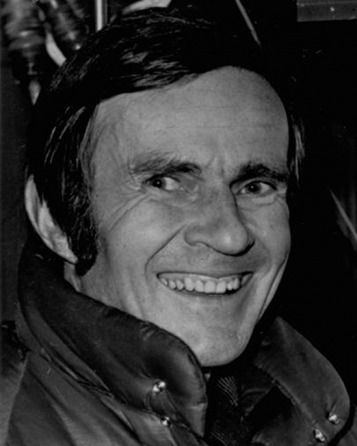
Krzysztof M. Serkowski, Research Professor in the Lunar and Planetary Laboratory and Astronomer at the Steward Observatory, both of the University of Arizona, died after a long illness on 7 October 1981.
Serkowski was born in Warsaw, Poland, on December 8, 1930. He lived in Warsaw during the war of 1939-1945. It was a hard place to be during the war and afterwards. Serkowski studied physics and astronomy during the years 1949-1954, first at Warsaw University and then at Wroclaw University where he received a Master’s degree in 1954. Originally he wanted to become a biologist, studying cells, but genetics had its problems under Stalin. “Biology without genetics was like a day in Poland without a potato,” Krzysztof used to recall. His natural second choice was astronomy.
Serkowski had been at the University of Arizona in Tucson since April 1970, first as an Associate Professor at the Lunar and Planetary Laboratory and, since 1979, as a Research Professor at the Lunar and Planetary Laboratory and Astronomer at the Steward Observatory.
Krzysztof M. Serkowski papers, 1970-1982
PermalinkMildred Shapley Matthews
×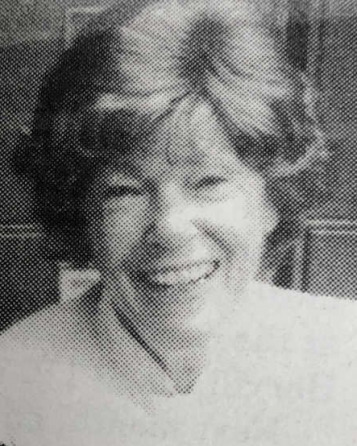
Mildred Matthews spent 26 years at LPL, beginning in 1970, working on the Space Science Series with Professor Tom Gehrels. The text below is from Rick Binzel, Professor of Planetary Sciences and Margaret MacVicar Faculty Fellow, Massachusetts Institute of Technology.
On February 11, just four days short of her 101st birthday, Mildred Shapley Matthews passed away peacefully at her home in California with her family present. Mildred was the daughter of Harvard College Observatory Director Harlow Shapley and she held the interesting distinction of being "lost in the solar system" for 75 years. As a commemoration of his newborn daughter, Shapley bestowed the name Mildred to asteroid 878 discovered in 1916. Unfortunately the initial observations of the asteroid were limited, and the object was "lost" with highly uncertain orbital elements until recovered in 1991. Friends and colleagues seeing Mildred over the years would always ask, "are you found yet?"
Matthews' foundational contributions to planetary science began around the time of her nominal retirement age, when in the 1970s she began working as the production editor in the inaugural years of the UA Press Space Science Series created by Tom Gehrels. Her role became most prominently recognized as co-editor on more than a dozen volumes extending in to the 1990s. Overall for more than 20 Space Science Series volumes she edited, operating through friendly (then increasingly stern, but always polite) post cards and phone calls to delinquent authors, it was Matthews who brought the books into their final published form.
Matthews leaves behind a legacy of books that have served as the gateway for countless planetary science careers and insights toward future advancements in our field.
AAS Division for Planetary Sciences - Mildred Shapley Matthews 1915-2016
PermalinkAdam Showman
×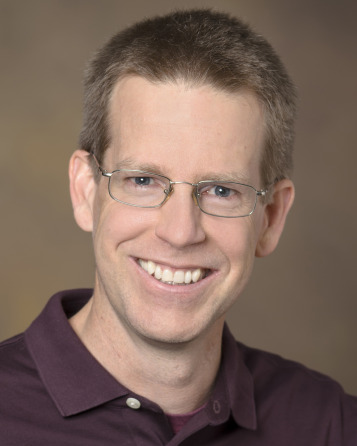
Adam P. Showman passed away unexpectedly on March 16, 2020, at his home in Tucson, AZ. His untimely passing has been felt widely in the international planetary science community which has lost an outstanding theorist, dedicated teacher of many graduate students, and a sought-after collaborator to a world-wide network of exoplanet astronomers.
Adam Showman was born on October 9, 1968 in Palo Alto, CA. He studied physics at Stanford University, where he earned a B.S. in 1991. He earned a Ph.D. at Caltech in 1999, with a dissertation on the atmosphere of Jupiter as well as the geophysics of its largest moon Ganymede. After two short postdoc stints at the University of Louisville and NASA Ames, Dr. Showman joined the Lunar and Planetary Laboratory at the University of Arizona as an Assistant Professor in 2001; he was named full Professor in 2012. He was recently named a Galileo Circle Fellow of the University of Arizona (2018) and a Fellow of the American Geophysical Union (2019).
During his career, Dr. Showman directly advised eleven graduate students and mentored many more across the disciplines of planetary science, atmospheric sciences and geosciences. He was a renowned teacher who enjoyed explaining to his students the complicated details of planetary physics and hammering out ideas to solve research problems. He developed eight different courses in the planetary sciences, including two completely new graduate courses, with course notes that are treasured by his students. His early pioneering research on the atmospheric dynamics of exoplanets (Showman & Guillot, 2002, Astron. & Astrophys. 385:166-180) has been the paradigm of hot gas giant atmospheric circulation models ever since. This work showed that the difference between the day and night side on hot Jupiters would drive strong eastward equatorial winds, comparable to or greater than the speed of sound in the medium. Showman and his collaborators worked out in detail the theoretical predictions that were spectacularly verified in subsequent observations, profoundly shaping the field. Showman extended his innovative theoretical models beyond hot gas giant planets, to tidally-locked and fast-rotating planets of smaller sizes and cooler temperatures as well as to the larger and warmer brown dwarfs. He was deeply involved in the exoplanet science community, collaborating with many observers to interpret their observations of exoplanet atmospheres and working with theorists to advance modeling techniques. He served the planetary science community in many professional roles, including as Editor of the international planetary science journal, Icarus.
LPL Memorial page for Adam Showman
PermalinkGodfrey Sill
×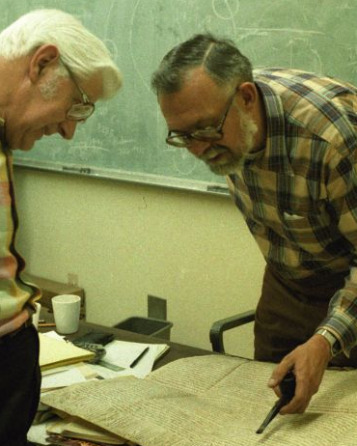
SILL, Godfrey T., age 76 died peacefully at home December 18, 2007. Teacher, planetary scientist, winegrower, husband, uncle, amateur astronomer, private pilot, vintner, builder of fun things. Born in Cleveland, he grew up in Leonia, New Jersey. With B.A. from St. Bonaventure and M.S. from Norte Dame he taught high school for ten years in Illinois. In 1965 he moved to Tucson, completed a Ph.D. at University of Arizona and conducted research on the atmospheres of planets at the UA's Lunar and Planetary Laboratory from 1965 to 1988. Discovered that the high clouds on planet Venus are made of sulfuric acid. In 1984 he started an experimental wine grape vineyard in Elgin, Arizona, which became his retirement project for 20 years. Always a teacher, he introduced hundreds of students, nephews and nieces, friends and neighbors, and even strangers to the wonders of the heavens: constellations, planets, star clusters, galaxies, sun spots, meteors, comets and satellites. He is survived by his wife, Laurel Wilkening, sisters Marjorie de Giovanni and Virginia Douglas, brothers Richard, Don, Bill and Hank Sill and numerous nieces and nephews.
PermalinkMelvin Simmons
×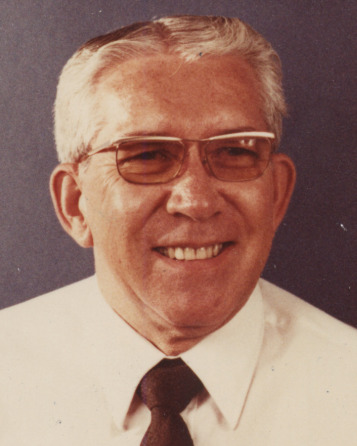
Melvin J. Simmons passed away on January 16, 2010. He was 87. Mr. Simmons was the Assistant Director at LPL for 20+ years; he retired in 1987. He was primarily responsible for the fiscal management of all departmental resources, including state and federal monies. After his retirement, he continued to prepare income taxes for many past and present LPL employees. He was married to Emily (Tompkinson) for 65 years. His children include Kent, Gary, Todd, and Carl Simmons, Rena Hoefferle, Julie Givens, and Jackie June Graber. He had 27 grandchildren and 31 great-grandchildren.
PermalinkBradford Smith
×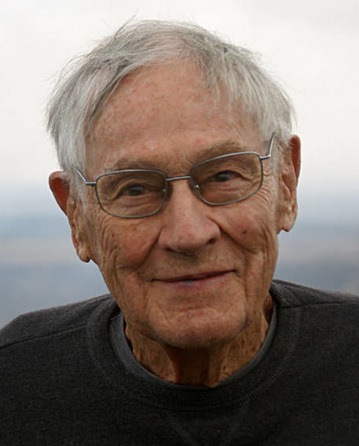
Bradford A. Smith, planetary astronomer best known as the lead imaging scientist on the Voyager mission who guided the world during the 1980s on a visual odyssey across the outer solar system, passed away peacefully at his home in Santa Fe, NM on July 3, 2018 from complications from myasthenia gravis, an autoimmune disorder. He was 86.
Brad was born in 1931 in Cambridge, Massachusetts and grew up in nearby Winchester, MA. He graduated in 1954 from Northeastern University with a BSc degree in Chemical Engineering and received a PhD in Astronomy from New Mexico State University in 1973. During the course of his career, he held the academic appointments of Associate Professor of Astronomy at New Mexico State University, Professor in both the Department of Planetary Sciences and the Department of Astronomy at the University of Arizona, and finally Research Astronomer at the Institute for Astronomy, University of Hawaii at Manoa.
Despite his early training as a chemical engineer, Brad's first love was astronomy. After college, he spent two years as a private in the army, working as an astronomer in the US Army Map Service at the White Sands Missile Range in New Mexico, where he began a long and productive association with Clyde Tombaugh, the discoverer of Pluto. His first astronomical project was a search (with negative results) for possible natural satellites of the Moon at Lowell Observatory, with Tombaugh, during the lunar eclipse of November 17-18, 1956.
Soon thereafter, he followed Tombaugh to New Mexico State University and in 1958 established there a program of systematic, ground-based telescopic imaging of the planets in support of the robotic planetary missions on which the newly formed NASA would soon be embarking. This was the dawn of the space age, a time when planetary science as a disciplined study of the planets was only just taking shape. Brad’s cutting-edge knowledge and experience in imaging the planets earned him membership in that first generation of explorers chosen to execute humankind’s initial reconnaissance of the solar system.
Throughout the 1960s, 70s, and 80s, he was involved in many US and international space missions: the Mariner 6, Mariner 7, Viking, and Soviet Phobos missions to Mars; the Soviet Vega mission to Halley’s Comet; and the Wide Field/Planetary Camera team for the Hubble Space Telescope. He rose to deputy team leader for the imaging investigation on Mariner 9, the first spacecraft to orbit another planet in 1971, and from 1972 through 1989, served as the imaging lead on the Voyager mission to Jupiter, Saturn, Uranus, and Neptune. For his contributions to space science, he was four times awarded the NASA Medal for Exceptional Scientific Achievement. Asteroid 8553 (bradsmith) is named for him.
While still deeply involved in spaceflight, Brad continued to push the limits in Earth-based astronomical imaging. In early 1976 Brad and his colleagues were the first to use a CCD detector on an astronomical telescope, yielding the first high-resolution infrared images of Uranus and Neptune. Later, in 1984, he would be the first to use a coronagraph on the star β Pictoris, an observational breakthrough that led to his discovery of the star's circumstellar debris disk. This was the first direct evidence of a planetary system beyond our own and a finding that initiated the observational study of extrasolar planetary systems, today the most productive field in astronomy.
Obituary, PSI - Dr. Bradford Smith
PermalinkCharles P. Sonett
×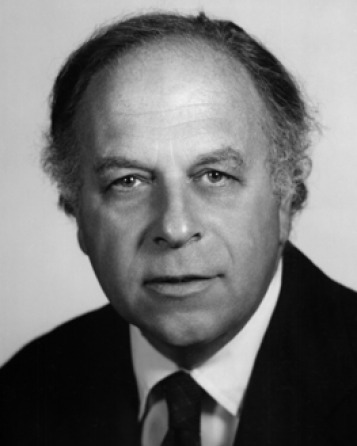
In 1973, Gerard P. Kuiper (1903-1973), widely considered to be the father of modern planetary astronomy, invited Charles P. Sonett to be his successor as director of the Lunar and Planetary Laboratory and to head the new interdisciplinary Department of Planetary Sciences, chartered that year by the Arizona Board of Regents. As a space exploration pioneer, Sonett was involved in numerous spacecraft programs, including the Pioneer Program, the Explorer Program and the Apollo Program–missions that dramatically advanced our understanding of the solar system, its planets and moons and beyond.
During his term as the second LPL director and first planetary sciences department head (1973-77), Sonett presided over a dramatic expansion. He built research and education programs in solar system science that became internationally recognized. In 1992, Sonett was named a Regents' Professor, the highest academic rank at the UA. Sonett retired in 2003 as a Regents' Professor Emeritus.
Read more about Professor Sonett: Charles P. Sonett: the Legacy of a Pioneering Space Scientist
PermalinkPamela Streett
×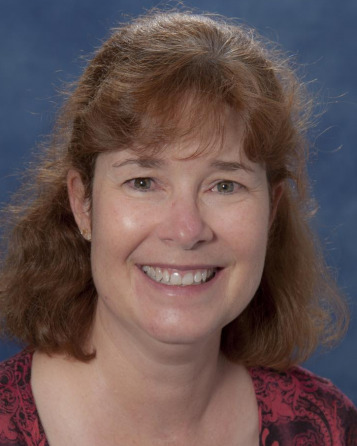
Planetary Sciences graduate coordinator Pam Streett passed away suddenly on September 30 after a brief illness. Pam had been with LPL since 1989; her first position was as a part-time secretary working for Professor William Boynton. In 1993, she transferred to the Academic Office as a full-time Administrative Assistant, before transitioning to her most recent role as graduate academic advisor (Program Coordinator) in 2005.
Pam was dedicated to her family and to the success of her LPL family—the many graduate students she helped to guide toward degree completion. She was a close colleague to her peers across the UA campus and a fan of UA Wildcat basketball. Outside of the office, Pam enjoyed craft projects and scrapbooking. She was active with the local Girl Scouts program and fostered animals through local rescue groups. Pam touched many lives with her kind heart, bright smile, and big laugh. Several generations of LPL faculty, staff, and students mourn her passing; we will miss her always.
PermalinkKaren Swarthout
×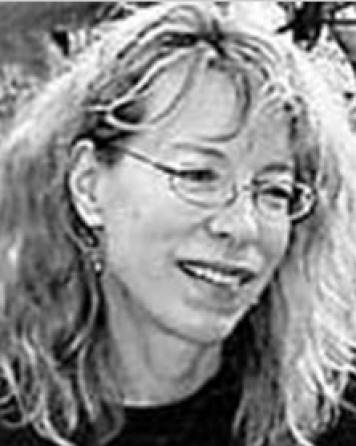
Karen's life was characterized by a generosity of spirit, an uncommon warmth of personality, and a light-hearted sense of humor. A woman of many passions, Karen had a great love for nature and she pursued many outdoor adventures, particularly hiking. The breadth of Karen's life experiences also cemented in her a deep commitment to service to others both in Arizona and abroad. Her spirit, passion and philanthropy truly knew no borders. In Arizona, Karen worked for 17 years at the University of Arizona's Lunar and Planetary Laboratory. She was also a highly regarded graphic artist. Karen's loss will be felt deeply not just in Arizona and her home-state Nevada, as her life transcended cultures and geographies. She spent many of her latest years traveling and living abroad, in both Canada and Peru in support of her husband's work, and her years living in Peru were marked by her work to create positive social change. In the Peruvian and Canadian communities where she worked and was well known, Karen's loss will also continue to be deeply felt. Karen, born in Las Vegas, Nevada, passed away on June 28, 2011. She is survived by her husband, Andy; her parents, multiple siblings, nieces and nephews. Those who wish to honor Karen's memory and her immense contributions to the lives of so many can do so through donations in her name to Doctors without Borders.
PermalinkTom Teska
×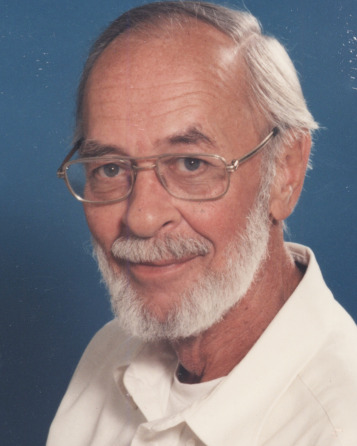
Former longtime LPL staff member Tom Teska passed away on March 15, 2013. Tom was the Manager for Mike Drake's Microprobe Lab from the early 1970s until 1998, when he retired.
Thomas M. Teska 79, passed away March 15, 2013. He was born in Chicago in 1933 to Emma and Thomas Teska. Surviving are his wife, Shelley Esterquest; son, John Teska; daughter, Jennifer Teska; grandson, Andrew and five stepchildren. Tom will be remembered by the many people with whom he shared his life in loving marriages, service to the Unitarian Church, and work at the University of Arizona. Through his hobbies, his gifts of charity, his good humor and his love, Tom gave so much to the people around him. He will be dearly missed.
A Memorial Service and Celebration of his life was held on Tuesday, March 26, 2013, at the Unitarian Universalist Church, 4831 E. 22nd St., Tucson. Memorial gifts in Tom's honor may be made to the charity of your choice.
PermalinkRandy Tufts
×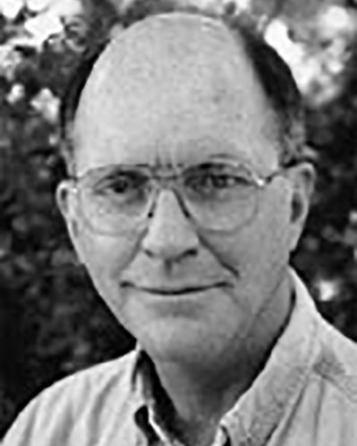
Randy Tufts, the co-discoverer of Kartchner Caverns who helped keep the underground wonder a secret for 14 years to guarantee its preservation, died Monday. He was 53. Tufts died at University Medical Center after a long battle with the rare blood disease known as myelodysplastic disorder syndrome, according to a statement issued by friends and family members.
Tufts was born in Tucson and graduated from Palo Verde High School. He went on to graduate in 1972 from the University of Arizona, majoring in geology and serving as student association president. While at the university, Tufts helped create and lead the Arizona Student Services Corp., which founded several student businesses to provide income for student services.
Tufts embarked on a 12-year career in public policy after leaving the UA. He helped lead the grass-roots organization Citizens Take the Initiative and helped found and direct Tucson Public Power, which challenged proposed rate increases of former utility Tucson Gas and Electric Co.
During the late 1990s, Tufts turned his attention to conducting research as a UA planetary scientist studying Europa, one of Jupiter's moons. He is credited with discovering the 600-mile San Andreas-like fault "Astypalaea" on Europa. Tufts earned a Ph.D. in geosciences at the UA at age 50.
He was diagnosed with MDS two years ago, and in November 2000 he received a bone-marrow transplant from his only sibling, Judy Rodin. The transplant took, and Tufts began to recover. Then in late January of this year, his body unexpectedly rejected the transplant and he fell ill.
Besides his wife and sister, Tufts is survived by his mother, Carol Tufts, of Tucson. Memorial donations may be made to the Tucson Light the Night Walk of the Desert Mountain States Chapter of The Leukemia & Lymphoma Society, Suite E-100, 2990 E. Northern Ave., Phoenix, AZ 85028.
Randy Tufts, Spelunker Who Kept a Secret, Is Dead at 53
Randy Tufts, 53; Discovered Kartchner Cave Complex
Dr. Bruce Randall "Randy" Tufts
Remembering Randy Tufts
Robert Watson
×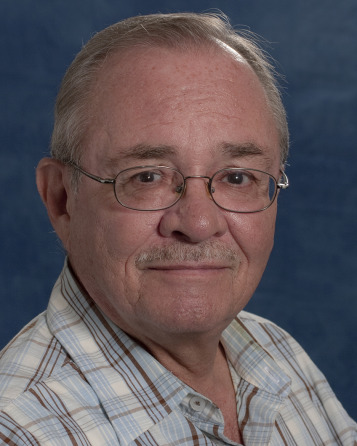
Robert E. Watson Jr., known to friends and family as "Bob," passed away on August 2nd, 2018, at the age of 72 years, in Tucson, AZ. Bob loved Tucson and spent many years there until his passing. He did move about the United States during his military years and settled in Minnesota working for Sperry Univac and other companies where he traveled around the world before moving back to Tucson. He loved his furry friends and had many pets over the years. As an advocate for the Humane Society he enjoyed supporting them with donations as well as a few adoptions. He also loved to take his dog Sadie everywhere he went, including to the Tucson Botanical Gardens. He enjoyed reading, using the internet, and watching movies on the subjects of Science Fiction and Fantasy, but loved all kinds. You can tell this by the hundreds (literally) of movies he had in his collection.
He served as a Captain and Missile Launch Officer in the Air Force, after which he obtained a Master’s Degree in computer science from the University of AZ. He spent most of his career developing computer programs and his last employer (before retiring) was the University of AZ where he worked at the Lunar Planetary Lab as Staff Engineer, specifically working on the Cassini project. Bob will be forever remembered by his family, daughters, Barbara (Shawn) Knoth and Sheron (Tim) Prinsen, brother, Edward (Cynthia) Watson. Bob will also be forever remembered by his numerous nephews and extended family and dear friends. He was preceded in death by his wife Sandra Watson (Clark), his parents, Robert Watson Sr. and Margarita Watson, Wayne L. Clark Jr and Elsa Clark and Grandparents.
PermalinkEwen Whitaker
×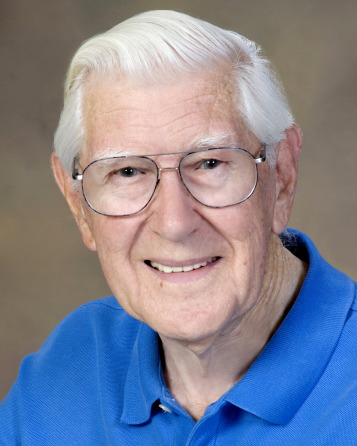
Ewen A. Whitaker came to Tucson in 1960 with Gerard P. Kuiper to conduct a lunar mapping project. Whitaker soon found that his work was just what NASA needed, and played a pivotal role in the first lunar missions: Ranger, Surveyor, and Lunar Orbiter. The mapping project produced the first compositional maps of lava flows on the moon—maps made possible by Whitaker's pioneering use of groundbased differential UV/Infrared lunar photography. These maps were instrumental in the selection of landing sites for the Surveyor and Apollo missions. Along the way, Whitaker worked with Kuiper to build and grow the Lunar and Planetary Laboratory (LPL) into a leader in the field of planetary science. Ewen retired from LPL in 1987, but never gave up his research in lunar selenography and nomenclature (the subject of Whitaker's Mapping and Naming the Moon is the history of lunar maps and nomenclature).
Following his retirement, Ewen was a regular visitor to LPL, taking time away from hobbies like clock repair to participate in outreach events and help to answer questions about the moon or LPL history, fulfill requests for information, and archive lunar maps and glass observing plates. Scientists, reporters, amateur astronomers, and historians sought him out for his expertise. In 2011, he was awarded an honorary doctorate degree by the University of Arizona's College of Science, which recognized his "contributions to the UA, mankind and science." In 2014, he was interviewed extensively in the documentary Desert Moon.
For more information about Ewen Whitaker, visit:
Lunar and Planetary Laboratory: Its Founding and Early Years
Remembering Ewen A. Whitaker, 1922-2016
Ewen Whitaker remembers Gerard Kuiper (audio recording, 1974) (MP3)
Apollo & the BAA Lunar Section
PermalinkPagination
- Previous page ‹‹
- Page 2
- Next page ››


